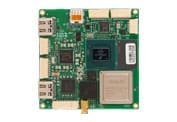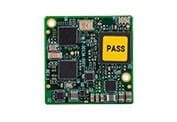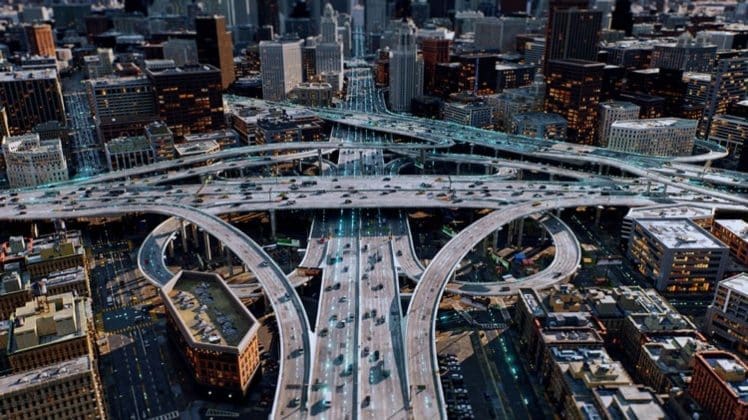Securing the Future: How AI is Making Cities Smarter and Safer
As cities continue to grow and become more complex, the concept of a smart city has emerged as a viable solution to improve the quality of life for residents and enhance the efficiency of urban services. A smart city leverages technology and data to optimize city operations, improve services, and promote sustainability. Artificial intelligence (AI) has become a key technology in the development of smart cities, and its adoption is expected to increase significantly in the coming years. According to a report by Frost & Sullivan, the global AI in smart cities market size is expected to grow from $320 million in 2017 to $3.5 billion by 2026. This blog will explore the use cases that are driving this explosive growth.
Why is AI at the Center of Smart Cities?
Smart cities generate vast amounts of data from a wide range of sources, such as sensors, cameras, and other devices operating over the Internet of Things (IoT). AI algorithms can analyze this information to identify patterns and anomalies that can help improve city operations and decision-making. One example of this is the use of video analytics to monitor public spaces. By analyzing video feeds from cameras placed in public areas, AI algorithms can detect unusual behavior or identify areas where city services can be optimized or streamlined with more efficient use of resources.

Here are some examples:
AI Use Cases in Smart Cities
Public Safety
AI-powered cameras and sensors can monitor public spaces, detect suspicious behavior, and alert law enforcement of potential threats. For example, law enforcement will typically review security camera footage to help find the perpetrator when a crime is reported. However, this reactive activity cannot prevent the crime from happening. AI-enabled intelligent cameras can analyze footage in real-time and detect criminal behavior, which can be instantly reported and dealt with before a crime occurs, without requiring anyone to sift through hours of footage.
More information about Visual Analytics and AI in Law Enforcement can be found here.
Emergency response
AI can analyze data to help emergency responders allocate resources more efficiently. For example, in the event of a natural disaster or a terrorist attack, AI algorithms can analyze data from sensors and cameras to help first responders identify the most affected areas and prioritize their response.
Parking systems
It’s not unusual for urban areas to experience parking shortages. By utilizing AI functions such as computer vision, cameras can provide real-time information on parking space availability. License plate recognition technology can help cities automatically enforce parking payments and tickets. Eventually, this technology can be integrated with smart cars to help automatically manage the entire parking process.
Public transportation
AI can optimize public transportation routes based on traffic patterns and passenger demand, reducing travel times and improving the system’s overall efficiency. The technology also allows public transportation users to receive and access live updates and tracking, which improves timing and customer satisfaction.
Traffic Control
The transportation industry can utilize AI technology to reduce traffic and accidents. AI-based traffic management technology can adjust traffic lights and turn signals to allow for better traffic flow and communicate with public transportation vehicles to avoid traffic or coordinate alternate routes. AI-based technologies can also be incorporated into smart apps to make the roads safer for riders of e-bikes, e-scooters, and even autonomous vehicles.
Waste Management
AI can be used to monitor waste levels in public trash cans and optimize garbage collection routes, reducing costs and improving the efficiency of waste management. Smart cities can also use AI to improve recycling by identifying and tracking recycling needs and trends. Some cities in Australia have already started using AI-powered robots to sort garbage and to pick up trash around lakes and rivers.
Energy Management
AI can be used to optimize energy consumption across municipal buildings and public spaces, reducing costs for HVAC and street lighting, for example, and promoting sustainability. The data can also be used for decisions about implementing renewable energy sources, and show cities where they have opportunities to save energy.
Predictive Models
By analyzing data from various sources, AI algorithms can predict future events or trends and help city officials make more informed decisions. For example, AI can help predict which areas are likely to experience an increase in crime rates or an electricity outage. This information can help city officials allocate resources more efficiently and proactively address potential issues before they become critical.
Concerns about AI in Smart Cities
However, using AI in smart cities raises concerns about privacy and data security. The collection and processing of data from various sources can create privacy concerns, and the potential misuse of this data can be a significant issue. Therefore, smart cities need to implement safeguards to protect the privacy and security of their residents’ data. One way to address these concerns is to implement transparent and accountable AI systems. This involves publicly making AI algorithms and data available and creating oversight committees to monitor their use. It also involves ensuring that AI systems are designed to minimize bias and discrimination and are regularly audited to ensure their effectiveness and fairness.
AI as a Central Factor of Municipal Management
The use of AI in smart cities can create significant benefits for residents, including improved safety and security, optimized city operations, better decision-making, and more efficient resource allocation. However, it is essential for cities to implement safeguards to protect the privacy and civil liberties of their residents. By doing so, cities can harness the power of AI to create smarter and safer communities.











